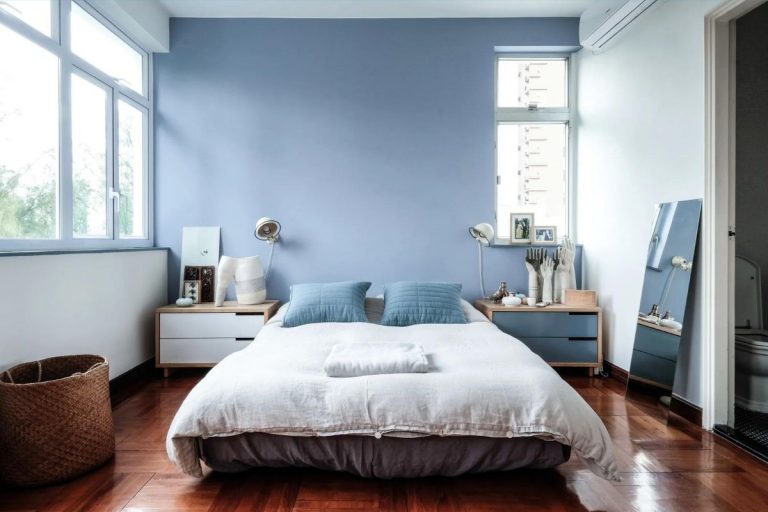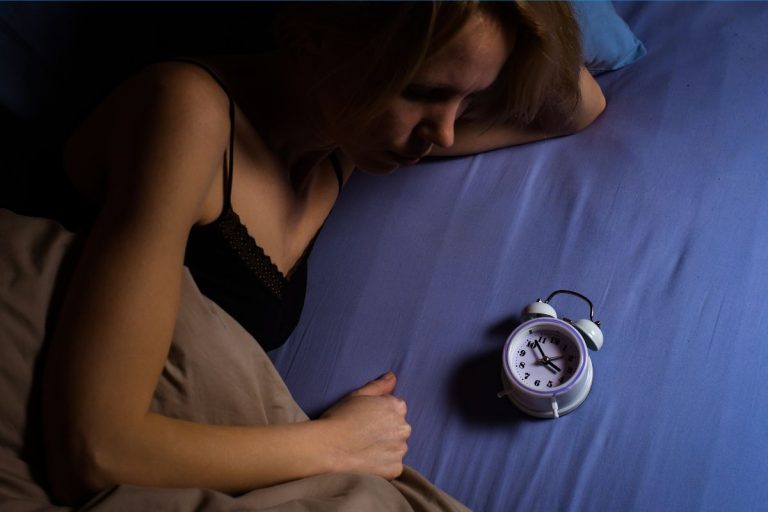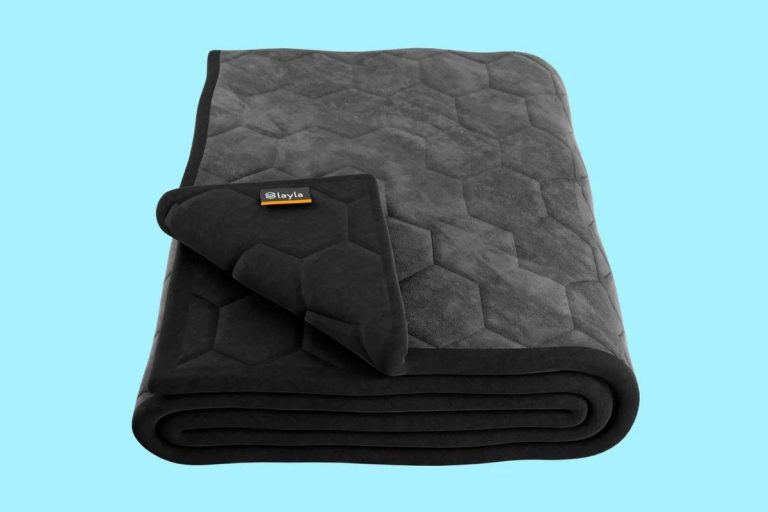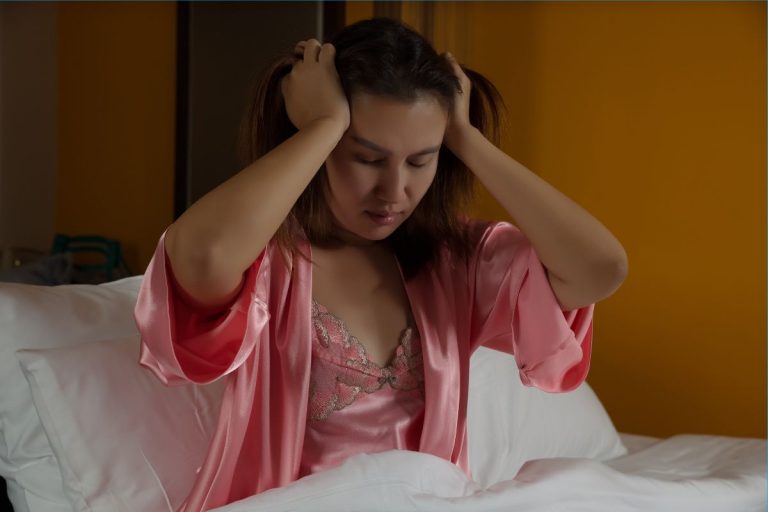During the cold winter months, especially during the night, it’s extremely important to keep your house warm and cozy. Freezing is a serious concern, especially for older people. That being said, sleeping in a cozy environment during the winter is just as important as sleeping in a cool environment during the summer months.
Nevertheless, every house or apartment with central heating gets its heating shut down after 10 pm or it continues working in a lighter load than during the day. Does the same apply to households that run heating on a gas fireplace? Fire hazard is a real concern, but it’s not the only risk associated with fireplaces staying on.
That being said, if you want to keep the gas fireplace on during the night, especially if you live alone, with small children or pets, you should think twice about it. While people may forget about it occasionally, it’s not a good practice to keep forgetting it and make it a habit.
If you’re concerned that the gas fireplace can lead to some problems in your household, you should continue reading this article. It’s much better to be informed about the ways to keep the house secure than start a fire or some other hazard that could harm both your household and the people who live in it.
Continue reading this article if you want to learn more about the gas fireplace, its types, and how long each of them can run. People generally make this mistake where they think that technological advancements make it extremely safe to sleep with gas and electric heaters on, but that’s not always the case.
Gas fireplaces are types of heaters that use natural gas or propane and insert a real flame that resembles that of the traditional fireplace. That way, you don’t have to burn the wood, yet you get an aesthetic and cozy environment fireplace, just like the ones in a movie. Add a cottage in the woods to the story, and you set yourself up a home from the fairytale.
The best part is that it works by a switch, so you can start a fire in seconds, instead of minutes, or more. There’s no wood-burning smell, and you don’t have to gather the woods, clean the ashes, and do other chores that come with the traditional fireplaces.
But, is this fireplace safer than using the traditional fireplace? Experts still argue about this and are looking for a good solution that would enable gas fireplaces to run for longer periods, without posing danger to your household.
Types of Gas Fireplace
Depending on the type of fireplace you use, you may let it burn for a shorter and longer time. That being said, if you’re looking to buy a gas fireplace for your house, let’s first learn about the types commonly used.
Gas Fireplace Inserts
How long can it run: Continuously
If you live in an old home or plan to purchase an older house or a cottage, chances are that it already has a traditional fireplace area. That’s when gas fireplace inserts come to play because they are the most convenient to install into the masonry area.
Because of the convenient installation using a vent with a pipe inside the chimney, these fireplaces are the most reliable and can run for several hours. As experts say, it won’t cause a fire hazard in your chimney thanks to the reinforced pipes that let the smoke exit safely through the chimney.
The front of the fireplace is also sealed, so there’s no fear about the fumes that can leak into your living room and give you potential breathing problems. Just make sure to get some professional who will install that because you have to ensure that everything is sealed and safe to use.
Editor’s note: Even though these fireplaces can run for a long time without being interrupted, you should still check them now and then and avoid letting them burn the whole night.
Direct Vent Gas Fireplace
How long can it run: Continuously
When compared to the aforementioned type of fireplace, the direct vent fireplace is equipped with an exhaust vent that goes to the exterior wall of the fireplace. This is a good option for people who want to install a fireplace in a house that didn’t have it before.
More importantly, it’s convenient for people who live in a house that doesn’t have a chimney but they want to be cozied up in front of a fireplace and rest or enjoy themselves. That way the exhaust gas and air get out through that vent instead of going up to the chimney.
It’s also quite easy to install, and won’t give you a headache, although we always recommend you to have a professional install it for you. The only safety measure that you should take is to install and seal the front glass to ensure that the fumes won’t escape to your living room.
Other than that, it’s fairly safe to use, and it can even run continuously, which is good if it’s extremely cold and you have to keep the house constantly warmed up.
Vent-Free Gas Fireplace
How long can it run: Few hours at a time
Vent-free gas fireplaces are surrounded by a lot of paranoia and doubts because they don’t have the vents that could easily exhaust the gas. That being said, the fumes are not released to the outside, and there’s always a small risk of carbon-monoxide toxification and fire hazards.
However, the regulators have ensured that all the companies and manufacturers that make them should be strictly regulated while making these products to ensure the high safety standards so that everyone can use these fireplaces safely, without worrying about all the risks they can carry.
Its compact and closed design makes it not suitable to run for an extended amount of time. However, with each different product, you should consider the label or the clarifications from the handbook that the manufacturer ships with every product.
Editor’s notes: Every vent-free gas fireplace is different, so you shouldn’t rely on what one manufacturer said about the other product. Always read the labels that refer to your model to ensure you’ll know how long it’s recommended to run the model that you own.
Can You Sleep With Gas Fireplace On?
You saw above that the gas fireplace inserts and direct vent fireplace are generally safe and represent a minimal risk for your household, just like the vent-free option even though it’s recommended to run it for only a couple of hours and then take a break.
But, despite all the safety designs, safety regulations, and other bits and pieces that surround the gas fireplaces, especially those that are vent-free, it’s never recommended to let them run throughout the night unless there’s someone to monitor them the whole night which is inconvenient and mostly not possible.
That being said, sleeping with the gas fireplace on is not a good idea which can result in scary consequences like the fire hazard, carbon monoxide poisoning, and more. This especially applies with you living with small children and babies, or pets like a dog because the combustion products coming out of the fireplace can lead to dangers when it comes to health and even life.
One of the biggest and most real threats is carbon monoxide, which doesn’t have a distinct smell and will go unnoticed by the household members. Moreover, if you’re asleep, you likely won’t be able to smell fire, or any other combustion byproduct being released into your room.
Flame and smell detectors are a good investment for homes that run this kind of heater, but not even the best-equipped options can recognize carbon monoxide at times. That being said, investments are too expensive to allow you to sleep soundly throughout the night.
It’s a different story if you use direct vent or fireplace inserts, as long as you are awake and can monitor the fire, but as mentioned before, that’s usually not the case and a vent-free fireplace isn’t recommended to run for a long time so you’re likely not even able to use it in the night hours.
Instead, make sure you allow your home to heat up during the day, avoid opening windows or doors, or doing anything that could keep the rooms cold. Invest in different types of heaters which can warm your house before the night and activate the so-called zone heating.
Also, always make sure to maintain your fireplace, clean your chimney, pipes, and vents, and if you’re not knowledgeable about this, hire a maintenance service that can help you do it. Chimney fires are the most common types of fire that can occur with this type of heating system, so always make sure everything is well-maintained, especially if you just moved in.
Editor’s notes: There are several alternatives to keeping the fire on. Of course, you can keep it on until you go to sleep. But, keep in mind that your house will remain warm for a few more hours after putting out the fire, even if you live in a larger house, or even during the most frigid winters.
In such a case, we rather recommend investing in better bedding like the warmer sheets made out of sateen, which is thick and can help regulate and maintain the temperature. Additionally, you can even invest in an electric blanket, weighted blanket, a very thick comforter, or a blanket that can keep you warm at night.
Put up extra clothes and avoid standing up from bed unless you have to, so you can maintain a high body temperature throughout the night and allow you to stay warm. Thermal socks are also a good investment that you can make, as well as a hot water bottle as warming up always starts from the feet, as they are the hardest to warm up.
There are so many alternatives to keeping the heater on the whole night, and this one is one of the best options.
Risks of Sleeping With Gas Fireplace On
Above, we discussed several risks of sleeping while the gas fireplace is on, regardless of the type we used. Let’s discuss these risks in a bit more detail, so you can have a better understanding of how great these risks are.
Carbon Monoxide Intoxication
Carbon monoxide is a risk with every appliance that can start a fire. It’s a gas that can’t be seen or smelled, especially when you’re asleep as your sense of smell is also sleeping with you. That being said, if there’s an excess release of carbon monoxide while you sleep, as well as other fumes, there’s a risk of intoxication and suffocation without even knowing.
That’s why it’s important to install a flame and carbon monoxide detector and spend a good amount of money to get one, as they are the most reliable appliances that can tell you there’s a build-up of the carbon monoxide in your house.
Make sure to keep it close to your fireplace so it’s detected early and you can evacuate your children, pets, and yourself to a safe location. According to a study, carbon monoxide poisoning can lead to various mental health consequences such as anxiety, depression and others.
Gas Leakage
This is another risk with gas fireplaces, although it’s less likely to happen. Keep in mind that if you’re using natural gas for your fireplace, it’s okay to smell a little of it when you first start the fireplace after getting it installed after the purchase.
However, if you suspect that there’s a gas leakage in your house, you should gather everyone as soon as possible and move away to 350 feet away from your home. You should also act fast to call the customer service of your gas company, as well as 911 in case there’s some bigger leakage.
This usually can’t be smelled while you’re in a deep sleep, which is why it’s not recommended to sleep when there’s a gas appliance running in your house.
Chimney Fire Hazard
Chimney fires can be quite common if your chimney isn’t maintained well. Now and then birds and other animals may nest there in search of the right place to lay their eggs and take care of their little ones. When the chimney gets congested with different pieces of wood, branches, leaves, and others, it may lead to a fire.
According to a report, there are 25,000 chimney fires every year reported in the USA, and they all can lead to different damage. Those fires can lead to 125 million dollars in property damage and can also lead to life-long health problems. Of course, not all fires are caused by a gas fireplace, but it’s always good to leave that possibility as plausible.
This is most commonly the case with fireplace inserts, and while it’s equipped with small pipes that allow seamless exit through the chimney, reducing the risk of fire hazards, it can still happen and pose risk for you and your family.
Also Read:





